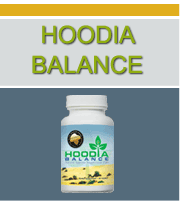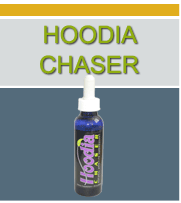Information About Hoodia Diet Pills
What is Hoodia Gordonii?
Latin Name: Hoodia gordonii
Other Names: hoodia, xhooba, !khoba, Ghaap, hoodia cactus, South
African desert cactus
Hoodia (pronounced HOO-dee-ah) is a cactus-like plant that grows
primarily in the semi-deserts of South Africa, Botswana, Namibia, and
Angola.
In the last few years, hoodia has been heavily marketed for weight
loss and has become immensely popular.
Although there has always been a demand for diet pills, after the ban
on the herb ephedra, the market was particularly ripe for the next new
diet pill.
Much of hoodia's popularity stems from claims that the San Bushmen of
the Kalahari desert relied on hoodia for thousands of years to ward
off hunger and thirst during long hunting trips.
They were said to have cut off the stem and eat the bitter-tasting
plant.
Hoodia gordonii grows in clumps of green upright stems. Although it is
often called a cactus because it resembles one, hoodia is actually a
succulent plant.
It takes about five years before hoodia gordonii's pale purple flowers
appear and the plant can be harvested.
There are over 13 types of hoodia. The only active ingredient
identified so far is a steroidal glycoside that has been called "p57".
Currently, only hoodia gordonii is thought to contain p57.
What is the History of Hoodia
Gordonii?
In 1937, a Dutch anthropologist studying the San Bushmen noted
their use of hoodia gordonii to suppress appetite. In 1963, scientists
at the Council for Scientific and Industrial Research (CSIR), South
Africa's national laboratory, began studying hoodia. They claimed that
lab animals lost weight after they were given hoodia gordonii.
The South African scientists, working with a British company named
Phytopharm, isolated what they believed to be an active ingredient in
hoodia gordonii, a steroidal glycoside, which they named p57. After
obtaining a patent in 1995, they licensed p57 to Phytopharm.
Phytopharm has spent more than $20 million on hoodia research.
Eventually pharmaceutical giant Pfizer learned about hoodia and
expressed interest in developing a hoodia drug. In 1998, Phytopharm
sub-licensed the rights to develop p57 to Pfizer for $21 million.
Pfizer returned the rights to hoodia to Phytopharm, who is now working
with Unilever.
Much of the hype about hoodia started after 60 Minutes correspondent
Leslie Stahl and crew traveled to Africa to try hoodia. They hired a
local Bushman to go with them into the desert and track down some
hoodia. Stahl ate it, describing it as "cucumbery in texture, but not
bad." She reported that she lost the desire to eat or drink the entire
day. She also said she didn't experience any immediate side effects,
such as indigestion or heart palpitations.
Where is Hoodia Gordonii Found?
Hoodia gordonii is sold in capsule, powder, liquid, or tea form in
health food stores and on the Internet.
How Does Hoodia Gordonii Work?
Despite its popularity, there are no published randomized
controlled trials in humans to show hoodia is safe or effective in
pill form.
One study published in the September 2004 issue of Brain Research
found that injections of p57 into the appetite center of rat brains
resulted in altered levels of ATP, an energy molecule that may affect
hunger. The animals receiving the P57 injections also ate less than
rats that received placebo injections. However, this was an animal
study and injections in the brain are different from oral consumption,
so it cannot be used to show that oral hoodia can suppress appetite in
humans.
The manufacturer Phytopharm cites a clinical trial involving 18 human
volunteers that found hoodia consumption reduced food intake by about
1000 calories per day compared to a placebo group. Although
intriguing, the study wasn't published or subjected to a peer-review
process, so the quality of the study cannot be evaluated.
What are the Side Effects of Hoodia?
There have not been any side effects reported from eating Hoodia or
from taking the P-57 molecule. Remember, for thousands of years that
Bushmen have eaten Hoodia Gordonii plants with no ill side effects.
How do I Know if it's Pure Hoodia?
There are widespread reports of counterfeit hoodia products. Mike
Adams of News Target, estimates that 80 percent of hoodia products are
contaminated or counterfeit. It is impossible to know if a hoodia
product contains pure hoodia and the active ingredient, unless it has
been tested by an independent laboratory.
We have tested the leading Hoodia Brands and have selected three
products that we feel offer the safest, most effective weight loss on
the market today.
 |
 |
 |
Hoodia Gordonii Plus is a
cutting-edge, advanced appetite suppressant, metabolism booster,
fat burner and energy enhancer all in one. This is a supplement if
you are looking for more than just an appetite suppresent.
Click here to learn more
|
Hoodia Balance contains 750MG of
pure certified Hoodia Gordonii from the Kalahari Desert. This
product will not give you the added benefit of Energy but is a
great appetite suppresant.
Click here to learn more |
Hoodia Chaser is quickly
absorbed into your body and starts working immediately to curb
your appetite. Just a few drops of the Hoodia Chaser liquid
extract will provide a more potent and effective dose of Hoodia.
Click Here to learn more |

|



